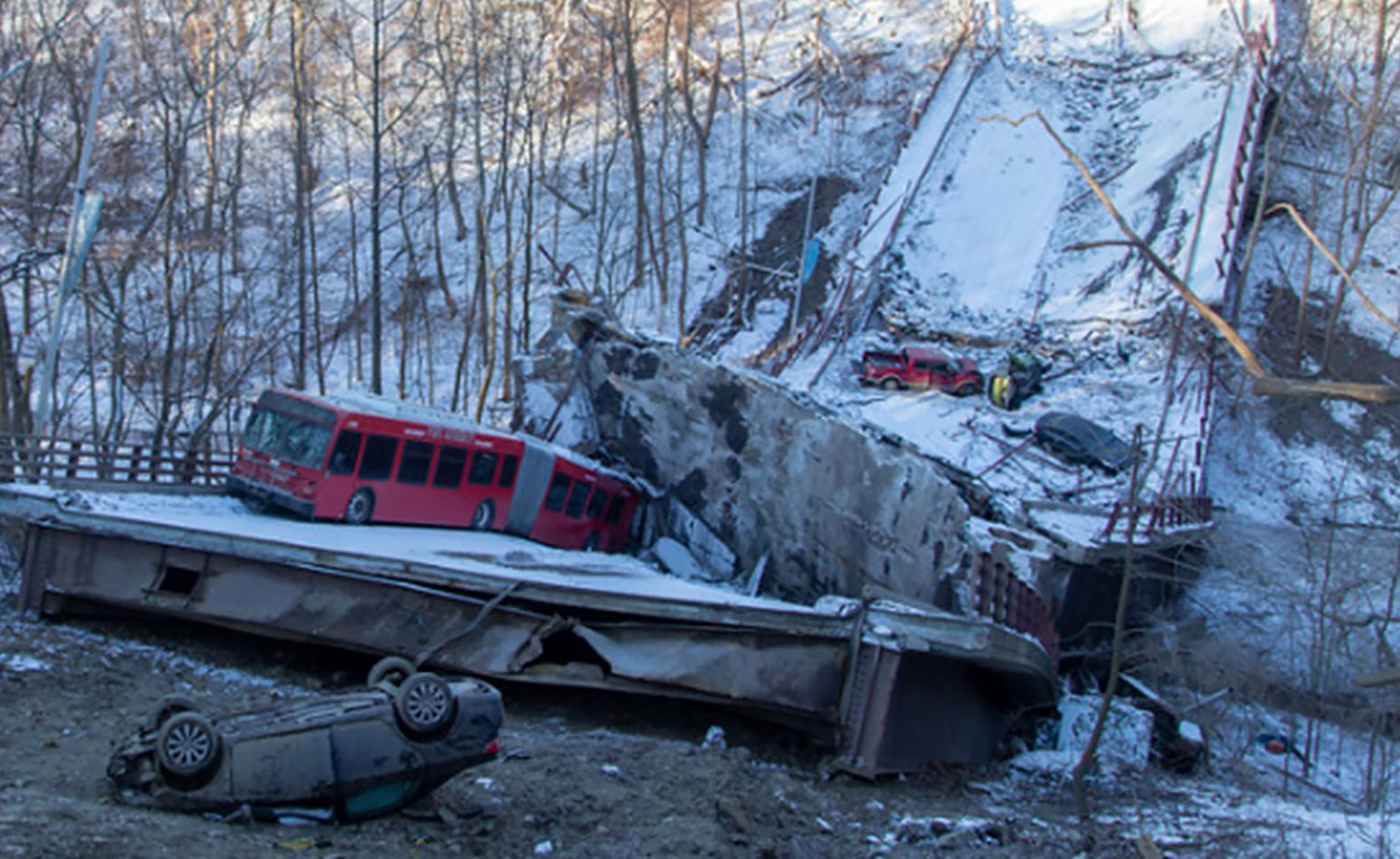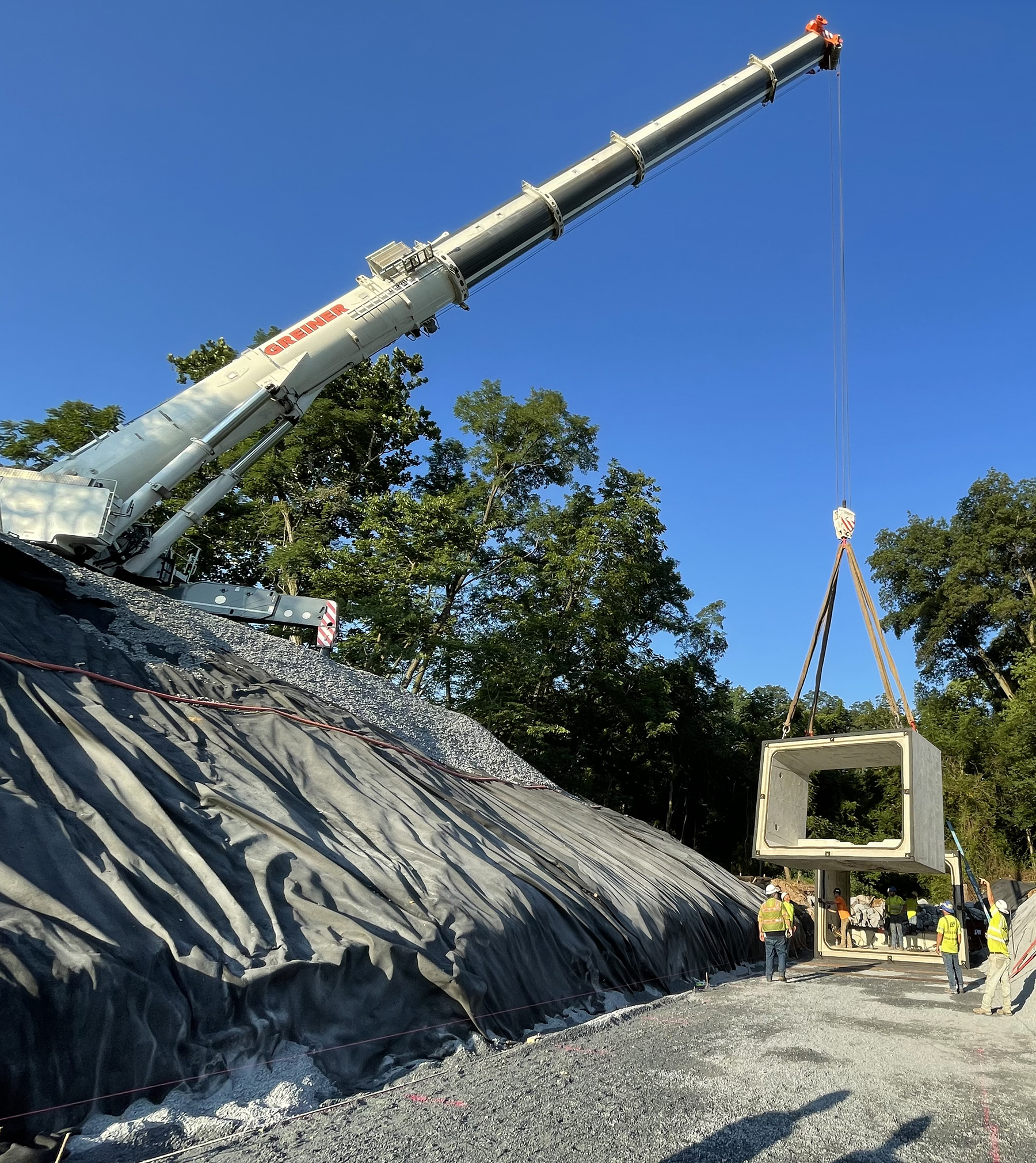
By Sarah Derouin, Ph.D.
In the early morning hours of Jan. 28, 2022, the Fern Hollow Bridge in Pittsburgh collapsed, crashing 100 feet into a park below. Four vehicles and a public bus were on the bridge during the collapse, and another car drove off the bridge abutment, landing on its roof. Four people were injured, but luckily no one died during the event.
After a thorough inquiry by the National Transportation Safety Board, investigators discovered extensive corrosion and section loss, leading to a failure of a bridge leg. Later that year, the state’s bridges received a D+ in ASCE’s 2022 Report Card for Pennsylvania’s Infrastructure. In Pennsylvania, 13.8% of the bridges are classified as “poor,” ranking the state second worst in the nation.
Further reading:
- How Pittsburgh’s Fern Hollow Bridge was replaced in less than a year
- Where old bridges go when it’s time
- New bridges will help keep NASA’s rocket parts rolling in Florida
It was against this backdrop that companies like STV signed on to tackle some of Pennsylvania’s much-needed bridge work.

Pennsylvania’s bridges
The state has the ninth-largest bridge inventory in the nation, with nearly 32,000. Each year, the Pennsylvania Department of Transportation inspects about 18,000 bridges, visiting each span at least once every two years. The average age of bridges in Pennsylvania is 53 years, older than the U.S. average of 45.
After inspections, PennDOT and the Pennsylvania Turnpike Commission identify which bridges will be repaired or replaced. Funding toward this effort comes from federal, state, local, and private sources.
Even with a $13 billion influx of federal funding over five years for bridge and road work in Pennsylvania from 2021’s Infrastructure Investment and Jobs Act, ASCE’s state report card estimates that annual funding needs to be increased to $18 billion to fully address Pennsylvania’s needs.
Projects all over the state have kicked off, with 684 bridges being sent out for bids to be repaired, replaced, or preserved in 2023. In south central Pennsylvania alone, more than 80 bridge and road projects in eight counties have begun. In total, these projects represent a $257 million investment.
Deciding which projects to tackle first requires collaboration between regional planners and PennDOT officials. After creating a multiyear project plan, PennDOT will put out the list of projects it wants to focus on in the upcoming year and what sort of work is needed (such as replacements or repair), and then it will advertise for consultants to help get the work rolling.
“That’s where we come in,” said Jason Galli, a senior project manager at STV. “We're there to help with construction services. We get them through the whole design process, get the fire and environmental clearances, the permitting, and develop the final bid package that is put out for contractors to bid on.”
Recently, STV engineers and designers have provided construction consultation services for a number of bridge repair and replacement projects in south central Pennsylvania. Each of these projects required unique considerations around wildlife habitat protection, recreational waterway activities, and traffic needs for schools, businesses, and public transportation.
Bridge improvements on Route 116, near Gettysburg National Military Park, had an additional requirement: protecting historical heritage. Galli noted that when working near a high-traffic, historically important site like Gettysburg, early communication is key. One step “at the very beginning of the project – along with our partner, PennDOT – was to go and talk to the National Park Service before we even started doing any kind of design,” he said.
These early conversations identified some aesthetic needs as well as archaeological concerns. “They wanted the bridge railing to be a certain color,” he said, adding that even the rocks around the bridge towers are of a certain type. “If you see bridges within the park service, they have a specific kind of look to them.” Knowing these parameters upfront allowed the team to design accordingly and include these needs into construction contracts.
With any historical site, there are also archaeological concerns for projects where ground is disturbed. “One of the bridges, they thought was adjacent to what might have been a field hospital during the Civil War,” explained Galli. The STV team launched a preliminary archaeology survey and created a bridge design that had a small footprint with limited disturbance on-site.

“It was a balance to make sure we put a safe bridge in there for the public, meet PennDOT and National Park Service needs, but also make sure that we're not disturbing too much of the land,” he said. “I think we came up with a pretty good solution that pleased everybody.”
A microcosm of the issue
Unfortunately, crumbling bridges are a nationwide issue, meaning many more efforts like the one in south central Pennsylvania are necessary. According to an American Road and Transportation Builders Association 2023 report, one in three U.S. bridges need repair or replacement. ASCE’s 2021 Report Card for America’s Infrastructure gave the nation’s bridges a C.
With so many locations and design- and site-specific needs, each bridge design and construction take painstaking planning and execution. Tackling such a big endeavor requires clear communication and collaboration between industry, state agencies, federal organizations, county representatives, and local communities, as demonstrated by the STV projects.
Although STV is a national company, infrastructure projects like those in south central Pennsylvania are completed by a local office. Galli manages the Harrisburg office, and he noted that living and working in the community makes these infrastructure projects even more meaningful.
“It's really just great to work on a project, come up with plans, and be able to go and see it and even use it for your own personal use,” Galli said. “It’s just very fulfilling and satisfying.”



